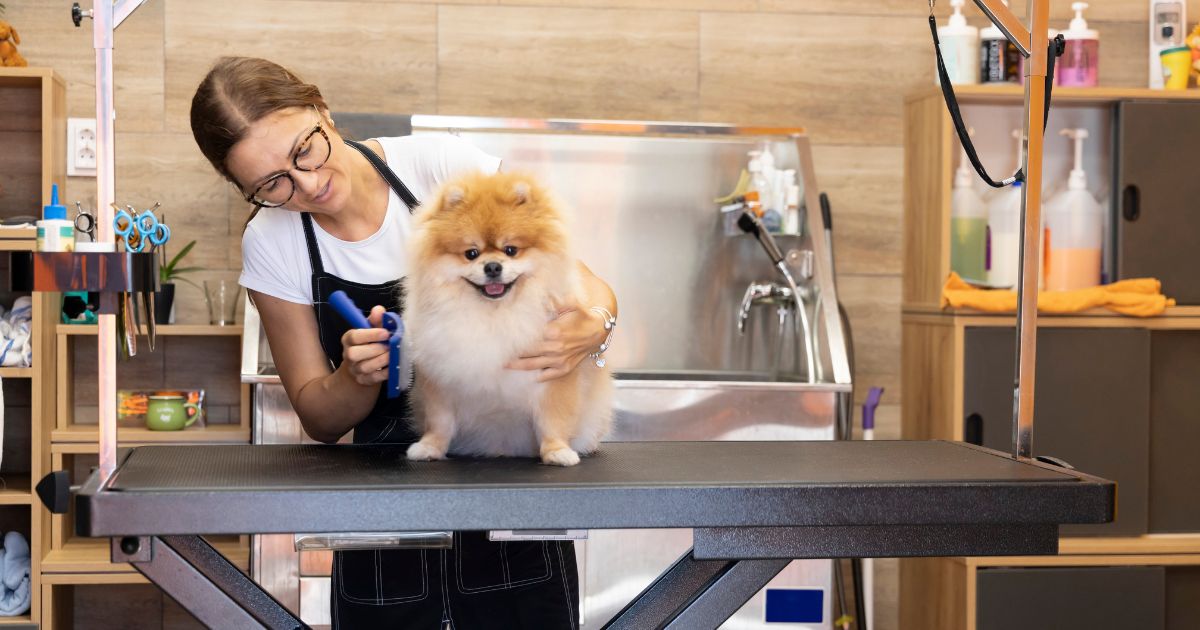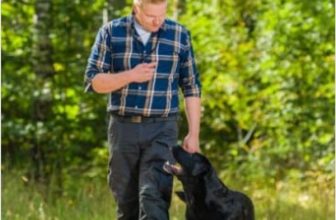How to Become a Dog Groomer?

If you’re a canine lover with an eye for detail and a passion for tender loving care, a dog grooming career might just be the perfect fit for you. When it comes to dog grooming, there’s more to that than just making your pooch look cute; it’s about keeping them healthy, clean, and happy. Whether you seek to work in a busy salon, are interested in opening your own grooming business, aspire to be a travel-based dog groomer, or hope to find a mobile groomer who is hiring; pursuing a career in dog grooming is attainable and the end results of this type of career is rewarding. Here is an overview to get you started.
What Does a Dog Groomer Do?
A dog groomers has to care for the looks and hygiene of their dogs. Their daily tasks include:
- Dogs should be bathed with suitable shampoo
- Brushing and detangling fur
- Grooming and styling the fur (in standard styles or according to the desires of the pet owner)
- Nail trims and ear cleaning
- Inspecting the skin for any issues, parasites, or health problems and reporting those to the owner
- Advising owners on home grooming and coat maintenance
Workplaces caterers work within include grooming salons, pet stores, veterinary clinics, animal shelters, and even are mobile groomers, while in some countries including the United Kingdom, home based groomers are the most popular.
Education and Training Route
There are 3 paths to learn to become a dog groomer, and the best one for you depends on how you like to learn, what your budget is, and your career goals.
1. Formal Education and Courses
A high school diploma is usually the minimum, however, many want-to-be dog groomers opt to take dog grooming courses. Options include:
- Level 2 Certificate for Dog Grooming Assistants
- Upon completion, you will achieve a level 3 diploma of dog grooming
- Level 4 Higher Professional Diploma for Dog Grooming1
These courses can be taken at colleges, private training centers and online academies. They cover canine anatomy, breed-specific grooming, safety and business basics. Some involve hands-on experience, providing practical exposure to a variety of breeds, while others are online and may require that you practice on your own or volunteer for other people’s dogs.
2. Apprenticeships
Apprenticeships offer a mix of classroom instruction and paid, on-the-job training. For instance, you could take a Dog Grooming Level 2 Intermediate Apprenticeship lasting up to 18 months and progress to roles including Animal Care and Welfare Manager1. Apprenticeships are perfect for those who tend to learn by doing things and don’t mind earning while they learn.
3. Mentorship and Hands-On Learning
If you can’t afford to invest in a formal education, you can learn directly from seasoned groomers. Most start out as groomer’s helpers, performing simple bathing and brushing, and work their way up to more difficult grooming duties while being supervised5. This route is flexible and affordable, but the quality of training can vary depending on how much your mentor knows.
4. Self-Education
For those who are self-starters, there are plenty of free resources — books, online tutorials, and seminars. Self-study is an ambitious approach and its popularity indicates that many people do indeed aspire to working alone, learning and then practicing as a journey to becoming competent.

Certification and Continuing Education
While you don’t necessarily need certification to work in most areas, the added credential can markedly improve your credibility and job opportunities. Third-party organizations including the National Dog Groomers Association of America, and International Professional Groomers Inc. offer certification exams where you need to prove both your knowledge and hands-on capable57. A salon certificate is not only a testimony to the fact that you have what it takes to deliver the anti-aging facial treatment, but it also helps assure your clients that you are serious about what you do and take it seriously.
Gaining Experience
Experience in the field is important. Most groomer schools have internships or apprenticeships as part of the curriculum. You can also volunteer at local animal shelters, become a dog walker, or work at local grooming salons to help perfect your craft and build some confidence.
What You Need to Succeed
What makes a successful dog groomer Successful dog groomers have a number of qualities in common:
- Patience: Dogs can get nervous or decide they’re done cooperating, so keep cool.
- Attention to Detail: Must be precise in breed cuts, and accurate in identifying health problems.
- Physical Stamina: Groomers are often on their feet for hours, sometimes lifting big dogs.
- Empathy: Knowledge of what the dog is feeling allows us to create a low stress environment for the pet and a little less stress for us groomers, as well.
- Service: You have to be able to talk to animal owners and know what they want.
Starting Your Career
After you go through the training and get some experience, you can:
- Look for work at grooming salons, veterinarian offices or pet stores.
- Own your own business, have a shop or mobile grooming truck.
- Further your education in show grooming, handling, exotic breeds or become an instructor, or open your own grooming school.
Networking with other professionals in the pet care business and becoming involved in industry organizations may also help you to find clients, and keep up with trends.
FAQs
Do I have to be licensed or certified to be a dog groomer?
There isn’t an official license required in most places, but accreditation from a credible organization can help boost your credentials and bring in more clients.
How long does it take to train to be a dog groomer?
Length of training is variable, from a few months (hands-on schools) to longer than 1 year (apprenticeships or online courses). The time frame is based on your track and how much time you spend practicing.
Is it possible for me to become a dog groomer without professional training?
Yes, lots of people who groom dogs start out as assistants and pick it up as they go. But receiving formal training and becoming certified can also make you eligible to move more quickly up the career ladder and command higher pay.
What are the pricipal problems of a dog groomer?
The work is physically strenuous and occasionally stressful, particularly when working with nervous or aggressive dogs. VERY GOOD COMMUNICATION IS NECESSARY AND PATIENCE.
How much do dog groomers make?
Salaries range widely by location, experience and whether you work for a business or are self-employed. As experienced professionals with a dedicated client base, self-employed groomers can make a decent living.
Final Thought
How to become a dog groomer Becoming a dog groomer is the perfect career for pet lovers who like to work with their hands and make pets look and feel good. And with a variety of avenues to enter from formal education to mentorship to self learning, there’s one for everyone. Though the work can be physically and emotionally taxing, the satisfaction of helping dogs look and feel better as well as the gratitude of their owners, make it more than worthwhile. Especially if you’re ready to meld your love for animals with a handy skill, the perfect career waiting for you may be dog grooming.







